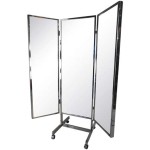Screen Mirroring From Apple Devices To Samsung TVs: A Comprehensive Guide
Screen mirroring allows users to display the content of their devices, such as iPhones, iPads, and Macs, onto a larger screen, like a Samsung Smart TV. This capability is highly valuable for various purposes, including presentations, media consumption, and collaborative work. Connecting Apple devices to Samsung TVs requires understanding compatible technologies and available methods, including native protocols and third-party applications.
The process involves establishing a wireless connection between the Apple device and the Samsung TV. This connection enables the transfer of audio and video signals, effectively mirroring the device's screen onto the TV. While the process may seem straightforward, various factors can influence the success and quality of the screen mirroring experience. These factors include network speed, device compatibility, and interference from other wireless devices.
Understanding AirPlay 2 Technology
AirPlay 2 is Apple's proprietary wireless streaming technology that allows users to stream audio and video content from Apple devices to AirPlay 2-compatible devices, including select Samsung Smart TVs. This technology offers a seamless and integrated experience for mirroring content directly from Apple devices without requiring additional hardware or software, assuming the Samsung TV supports AirPlay 2.
To determine if a Samsung Smart TV supports AirPlay 2, users should consult the TV's specifications or check the AirPlay settings within the TV's menu. Typically, newer Samsung Smart TV models manufactured from 2018 onwards are likely to support AirPlay 2. Once compatibility is confirmed, users can enable AirPlay within the TV's settings to prepare for screen mirroring.
Using AirPlay 2 for screen mirroring offers several advantages. It provides a stable and reliable connection with minimal latency, ensuring a smooth mirroring experience. Furthermore, AirPlay 2 supports streaming content in high resolution, maintaining the visual quality of the mirrored content. The integration within the Apple ecosystem also simplifies the connection process and enhances the user experience.
Steps for Screen Mirroring via AirPlay 2
To initiate screen mirroring from an Apple device to a Samsung TV using AirPlay 2, the following steps are generally required. First, ensure that both the Apple device and the Samsung TV are connected to the same Wi-Fi network. This is essential for establishing a wireless connection between the two devices.
On the Apple device, locate the Control Center. For iPhones and iPads with Face ID, swipe down from the top-right corner of the screen. For devices with a Home button, swipe up from the bottom of the screen. Within the Control Center, find and tap the "Screen Mirroring" icon. A list of available AirPlay devices will appear.
From the list of available devices, select the Samsung TV. A passcode may appear on the Samsung TV screen. If prompted, enter this passcode on the Apple device to authenticate the connection. Once the connection is established, the Apple device's screen will be mirrored onto the Samsung TV. Any content displayed on the Apple device, including apps, photos, and videos, will be visible on the TV screen.
To stop screen mirroring, repeat the steps above and select "Stop Mirroring" from the Screen Mirroring menu on the Apple device. Alternatively, users can disconnect the connection from the Samsung TV's menu. It is advisable to disconnect the connection when screen mirroring is no longer required to conserve battery life and prevent unintended content sharing. The connection should remain stable unless the Wi-Fi signal is weak or interrupted.
Alternative Methods for Screen Mirroring
While AirPlay 2 provides a straightforward method for screen mirroring, alternative options exist for users whose Samsung TVs do not support AirPlay 2 or those who prefer to use different methods. These alternatives include using third-party screen mirroring applications and hardware adapters.
Several third-party applications are available on the App Store that facilitate screen mirroring between Apple devices and Samsung TVs. These applications often use different protocols, such as Miracast or DLNA, to establish a wireless connection. While these applications can be useful, users should exercise caution when selecting and installing them, ensuring they are reputable and from trusted developers. Some apps may require in-app purchases or subscriptions to unlock full functionality.
Another alternative involves using hardware adapters, such as HDMI adapters or wireless display adapters. An HDMI adapter physically connects the Apple device to the Samsung TV via an HDMI cable. This method provides a direct and reliable connection, but it requires a physical cable and may limit the device's mobility. Wireless display adapters, such as those that support Miracast, can wirelessly connect the Apple device to the Samsung TV, but they may require additional configuration and may not offer the same level of performance as AirPlay 2.
The choice between these alternative methods depends on the specific requirements and preferences of the user. AirPlay 2 remains the preferred option for users with compatible Samsung TVs due to its seamless integration and ease of use. However, third-party applications and hardware adapters offer viable solutions for users who require alternative approaches.
The performance and reliability of screen mirroring can be influenced by several factors. Network speed plays a crucial role in ensuring a smooth and lag-free experience. A stable and fast Wi-Fi connection is essential for transferring audio and video signals between the Apple device and the Samsung TV. Interference from other wireless devices can also impact performance. Users should minimize interference by keeping the devices close to the Wi-Fi router and away from other electronic devices that may generate interference.
Device compatibility is another critical factor. While newer Apple devices and Samsung TVs are generally compatible with AirPlay 2, older devices may require software updates or may not support the technology at all. Users should verify the compatibility of their devices before attempting to screen mirror. Software updates can often resolve compatibility issues and improve performance.
Screen mirroring from Apple devices to Samsung TVs offers a convenient way to share content and enhance the viewing experience. By understanding the available methods and factors that influence performance, users can effectively mirror their devices onto larger screens for various purposes.

Now You Can Stream Iphone To Samsung Smart Tvs Without Airplay Updated Apple Must

Screen Mirroring To Your Samsung Tv

How To Stream From An Iphone Using Airplay 2

How To Stream From An Iphone Using Airplay 2

4 Easy Ways To Mirror Iphone Samsung Tv For Free

How To Connect Phone Tv Screen Mirror Iphone A Samsung Easy Setup

Latest Airbeamtv App Lets You Mirror Your Iphone Directly To A Samsung Television 9to5mac

How To Stream From An Iphone Using Airplay 2

Screen Mirror To Samsung Tv Android Mac Ios Free App

How To Mirror An Ipad A Samsung Tv








